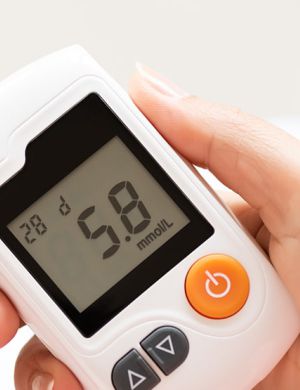
EU MDR Regulations
Regulation (EU) 2017/745 is a regulation of the European Union on the clinical investigation and sale of Act (EU) 2017/745 is a regulation of the European Union on the clinical investigation and sale of medical devices for human use. It repeals Directive 93/42/EEC, which addresses medical devices, and Directive 90/385/EEC, which addresses active implantable medical devices. The Medical Device Act (MDR), which was adopted in April 2017, changes the European legal framework for medical devices and introduces new principal and supportive responsibilities for EMA and for national competent authorities in the assessment of certain categories of products. The Act entered into force in May 2017 and had a staggered transitional period.
The MDR introduces new or revised responsibilities for EMA for:
- Medicines with an integral device, such as pre-filled syringes and pens, and pre-filled inhalers;
- Medical devices containing an ancillary medicinal substance to support the proper functioning of the device. Examples include drug-eluting stents, bone cement containing an antibiotic, catheters coated with heparin or an antibiotic agent, and condoms coated with spermicides;
- Medical devices made from substances that are absorbed by the human body to achieve their intended purpose;
- Borderline products for which there is uncertainty over which regulatory framework applies. Common borderlines are between medicinal products, medical devices, cosmetics, biocidal products, herbal medicines and food supplements.
- The regulations bring a series of important improvements to conformity assessment for medical devices with the intention to:
- Improve the quality, safety and reliability of medical devices placed on the European market.
- Strengthen transparency of information related to medical devices for consumers and practitioners.
Enhance vigilance and market surveillance of devices in use.
The extent to which these changes will affect user operations will depend on the type of device manufactured and the role the user hold (manufacturer, importer, authorized representative). It is however, anticipated that in most cases significant changes must be made to the compliance process, quality management system, and technical documentation and successfully implemented, and certified as relevant to device classes and roles of the organization, before compliance with the regulations can be achieved.
This Act lays down rules concerning the placing on the market, making available on the market, or putting into service of medical devices for human use and accessories for such devices in the Union. This Act also applies to clinical investigations concerning such medical devices and accessories conducted in the Union. This Act shall also apply, as from the date of application of common specifications adopted to the groups of products without an intended medical purpose, taking into account the state of the art, and in particular existing harmonized standards for analogous devices with a medical purpose, based on similar technology. The common specifications for each of the groups of products shall address, at least, the application of risk management for the group of products in question and, where necessary, clinical evaluation regarding safety. The necessary common specifications shall be adopted by 26 May 2020. They shall apply as from six months after the date of their entry into force or from 26 May 2020, whichever is the latest.
Some Key Changes of the Act Include:
- New Structure and level of details of the contents for the technical file. (Annex II of the MDR)
- Establishment of compliance with” General safety and performance requirements.” (Annex I of the MDR)
- Requirement for a” person responsible for regulatory compliance” to be appointed within the manufacturer. (Article 15 of the MDR)
New/revised procedures to be implemented to handle the new requirements including entering information into the databases. (e.g. Eudamed.)
Strengthened requirements for post market surveillance, clinical evaluation, post market follow up and clinical investigations (Annex III XIV & XV). It should be noted that the processes for post market surveillance/post market clinical follow up should implemented as soon as possible, as the data generated will be very useful for documenting compliance to the new requirements when you apply for MDR or IVDR.
Requirement for” summary of safety and clinical performance” for Class III devices and implantable devices. (Article 32)
Generally, the conformity assessment system as we know it from the MDD is maintained. There are changes to the classification rules and some products are now assigned a higher class, requiring a more demanding conformity assessment process (for example, some products that used to be IIb are now class III and thus subject to a design examination.) In addition to this the assessment process at the notified body has increased in complexity and especially for class III & IIb implants and Infusion devices the scrutiny is increased.
Implementation of Unique Device Identification system (UDI) processes and marking. The requirements for the UDI system are given in several articles (27, 28, 29 etc.) as well as annex VI.
Migration of MDD-certified devices to MDR
The concepts and the requirements of the MDD and IVDD remain part of the new legislation but significant additional requirements have been added and changes made. A new application for certification must be made by the legal manufacturer which will commence a new certification cycle, with validity up to 5 years. Manufacturers shall successfully complete a Notified Body review of technical files and an initial on-site audit activity to verify implementation before certification will be granted. The review of technical files is based on sampling, however, this is not permitted for Class IIb implantable or Class III devices. Manufacturers shall ensure that their technical files and design dossiers are MDR compliant prior to application.
Placing on the market and putting into service
A device may be placed on the market or put into service only if it complies with the Act when duly supplied and properly installed, maintained, and used in accordance with its intended purpose. Demonstration of conformity with the general safety and performance requirements shall include a clinical evaluation. Devices that are manufactured and used within health institutions shall be considered as having been put into service. With the exception of the relevant general safety and performance requirements, the requirements of this Act shall not apply to devices, manufactured and used only within health institutions established in the Union, provided that all of the following conditions are met:
(a) the devices are not transferred to another legal entity,
(b) manufacture and use of the devices occur under appropriate quality management systems,
(c) the health institution justifies in its documentation that the target patient group’s specific needs cannot be met, or cannot be met at the appropriate level of performance by an equivalent device available on the market,
(d) the health institution provides information upon request on the use of such devices to its competent authority, which shall include a justification of their manufacturing, modification and use;
(e) the health institution draws up a declaration which it shall make publicly available, including:
(i) the name and address of the manufacturing health institution;
(ii) the details necessary to identify the devices;
(iii) a declaration that the devices meet the general safety and performance requirements set out in Annex I to this Act and, where applicable, information on which requirements are not fully met with a reasoned justification therefore,
(f) the health institution draws up documentation that makes it possible to have an understanding of the manufacturing facility, the manufacturing process, the design and performance data of the devices, including the intended purpose, and that is sufficiently detailed to enable the competent authority to ascertain that the general safety and performance requirements set out in Annex I to this Act are met;
(g) the health institution takes all necessary measures to ensure that all devices are manufactured in accordance with the documentation referred to in point (f), and
(h) the health institution reviews experience gained from clinical use of the devices and takes all necessary corrective actions.
Member States may require that such health institutions submit to the competent authority any further relevant information about such devices, which have been manufactured and used on t type of such devices and shall be permitted access to inspect the activities of the health institutions.
Don’t miss out! Click here to stay in touch.
Categories
- Biopharma (58)
- Consumer Health (21)
- Cosmetics (11)
- Diagnostics (5)
- Digital Health (8)
- Food (2)
- Medical Device (112)
- OTC (5)
- Regulatory Intelligence (13)
- Standards (41)
Recent Blogs
Get the latest updates from Vistaar

CONNECT WITH US

Let's talk about how Vistaar can help you




